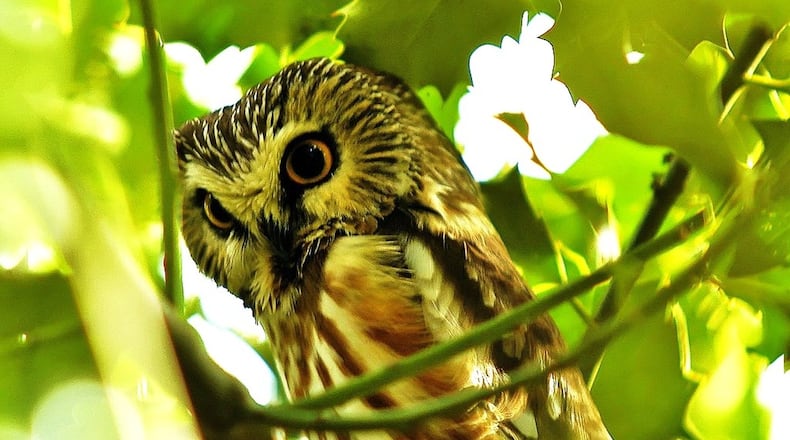You’re probably familiar with Georgia’s four resident owl species: barn, barred, great horned and Eastern screech owls, which live year-round and nest across the state.
In autumn, though, Georgia’s owl diversity may increase when some migratory species start trickling in, perhaps to spend the winter. They include short-eared, long-eared and Northern saw-whet owls.
But chances of encountering them are slim. They’re listed as “rare to uncommon” in Georgia — although bird experts think they may be more common in the state during winter than records indicate. For one thing, all three species prefer seclusion, remaining well-hidden in vegetation where they are difficult to detect during the day.
The short-eared owl, which breeds across Alaska, northern Canada, New England and the eastern Great Lakes, is a medium-size bird that hunts prey over grassy fields and meadows. When northern winters become extra harsh, more of them may fly south. Over the years, the owl has most consistently been seen in Georgia at a birding site known as Cobb Owl Fields in Sumter County.
The long-eared owl nests in the far north of North America and in Europe and Asia. About 25 wintertime sightings of the bird have been reported across Georgia, but bird experts believe that number would be much higher if concerted efforts were made to find it.
Such efforts have been ongoing for years in Georgia for the Northern saw-whet owl, the smallest owl in Eastern North America. It nests mostly in northern boreal forests. Since 2006, Charlie Muise, a licensed bird bander in Lamar County, has banded 25 saw-whets that he trapped with mist nets in his backyard during fall and winter.
The migration of saw-whets, though, is still poorly understood because of their nocturnal, reclusive behavior. Whether they in fact overwinter in Georgia or elsewhere in the South remains a mystery, Muise said.
IN THE SKY: From David Dundee, Tellus Science Museum astronomer: The moon will be last-quarter on Tuesday. Mercury is low in the east just before sunrise. Brilliant Venus is very low in the west just after dark and sets about an hour later. Mars is in the south at dusk. Jupiter is low in the west and Saturn is low in the southwest around dusk.
About the Author
Keep Reading
The Latest
Featured



